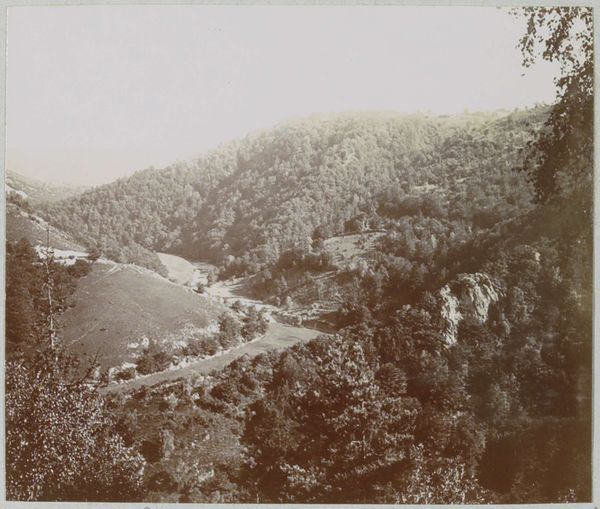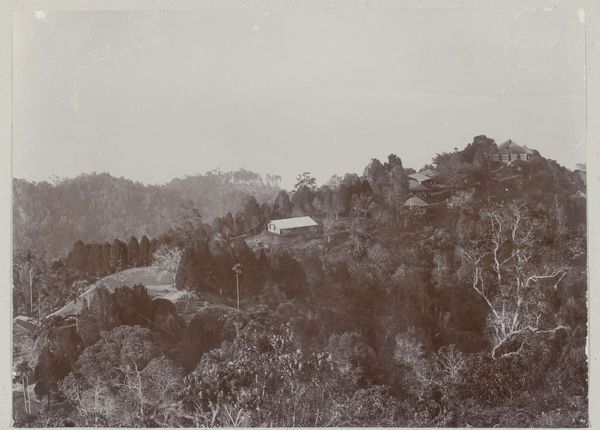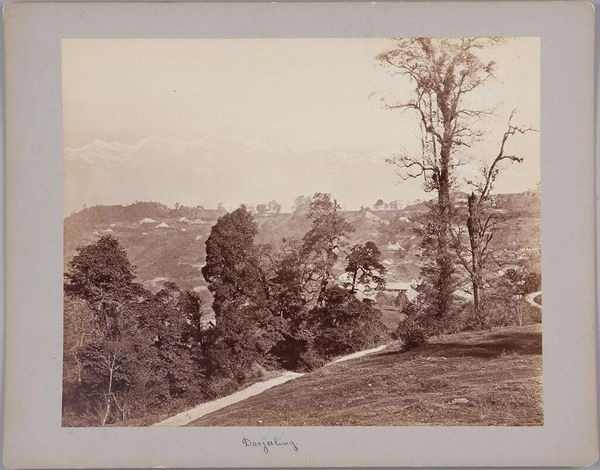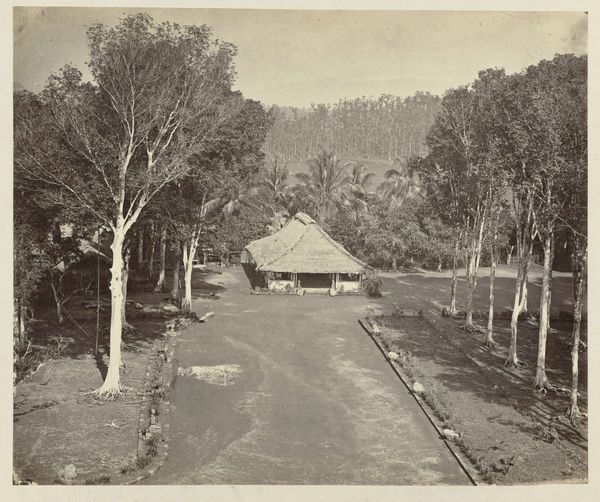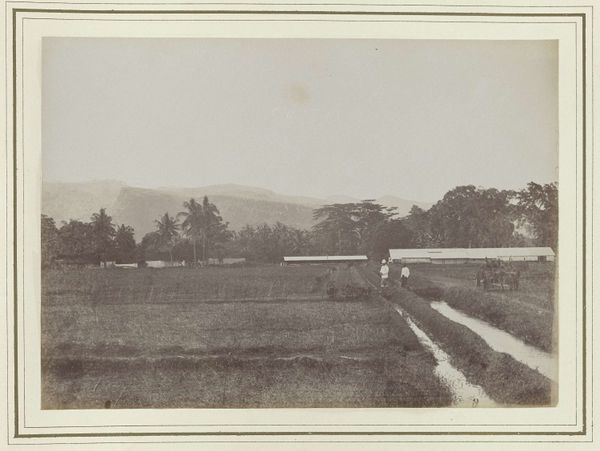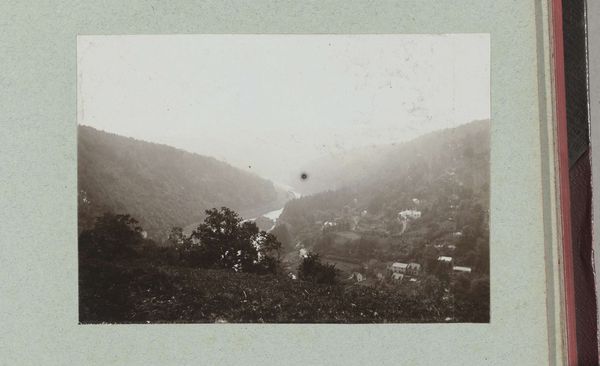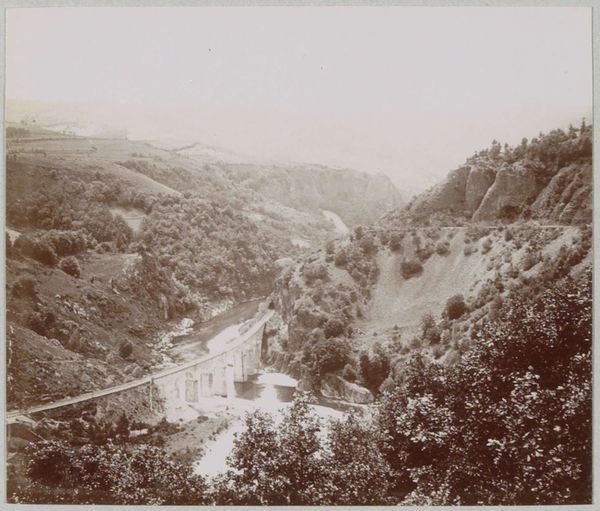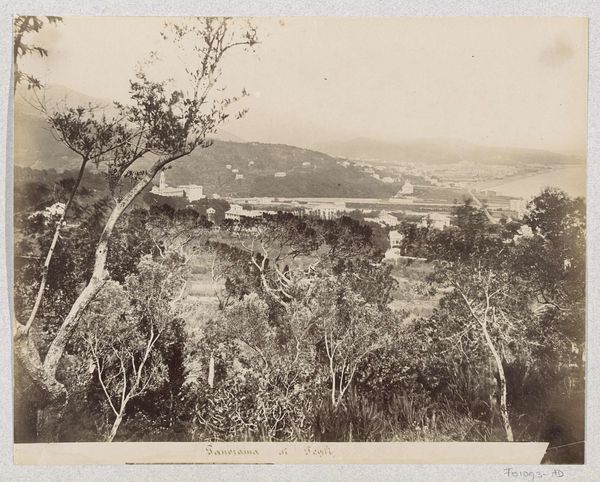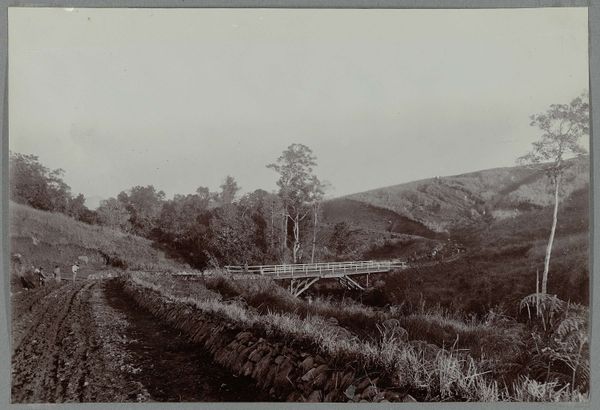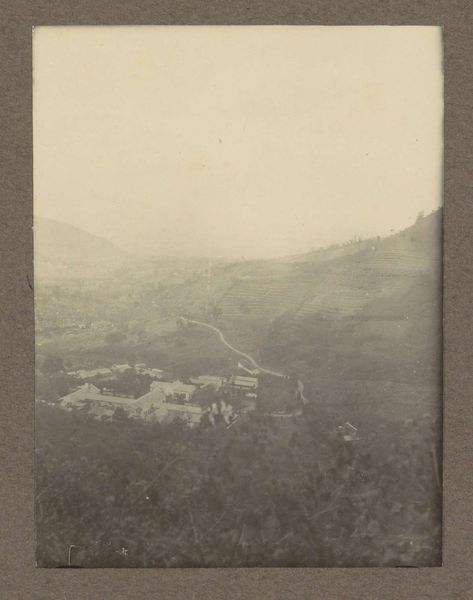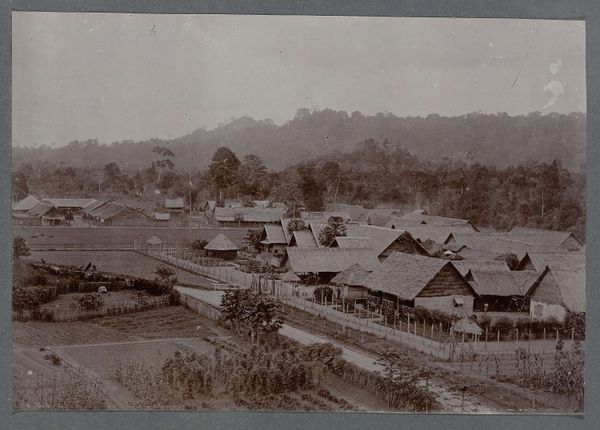
photography
#
still-life-photography
#
landscape
#
photography
#
mixed media
#
watercolor
Dimensions: height 138 mm, width 200 mm
Copyright: Rijks Museum: Open Domain
Curator: This evocative photograph, simply titled "Huizen en bomen," or "Houses and Trees," dates from somewhere between 1903 and 1913. It's an anonymous work, though certainly speaks volumes. Editor: The stillness of the photograph is striking, isn’t it? The muted tones lend a certain quietness to the whole scene. What captures me most are the textural contrasts. Curator: Yes, texture is a key element. What seems immediately clear is the framing of what seems to be housing from below against the wild forest backdrop. The positioning hints at how closely these structures were knit into the natural environment of that time. Editor: Agreed. You see the way the thatched roof and rough timber of the houses contrast sharply with the density of the trees. One almost asks, were materials used for housing obtained sustainably or exploitatively? And, to what extent was the image of that interaction framed as the subjugation of the natural resources by local inhabitants or settlers? Curator: It’s difficult to be certain with so little accompanying information, but certainly those power dynamics resonate today when looking at human engagement with natural materials, resources, and land usage, for example the rise in ecofascist sentiment that privileges one group over the other on environmental grounds. Editor: And yet, doesn't the ambiguity itself say something profound about the making of history? As a materialist, I'm constantly thinking about what isn't immediately visible – the labor, the economic systems, the political realities that underpin such seemingly serene images. What do we actually consume, if not simply what we want to project of that era? Curator: That uncertainty can become a space for reimagining histories, or even considering parallel narratives from marginalized communities. As theorists have observed, photographic archives carry the latent power of challenging our existing conceptions and expectations. It is incumbent on us, the viewers and critics, to remain receptive to unheard voices when they reveal themselves in the present. Editor: Absolutely. By digging beneath the surface and thinking about the material reality and construction of art objects like "Huizen en bomen," we are not just observing art; we're actively decoding, questioning, and challenging systems. Curator: And ideally creating a more equitable space for these visual exchanges and understanding for our communities.
Comments
No comments
Be the first to comment and join the conversation on the ultimate creative platform.
